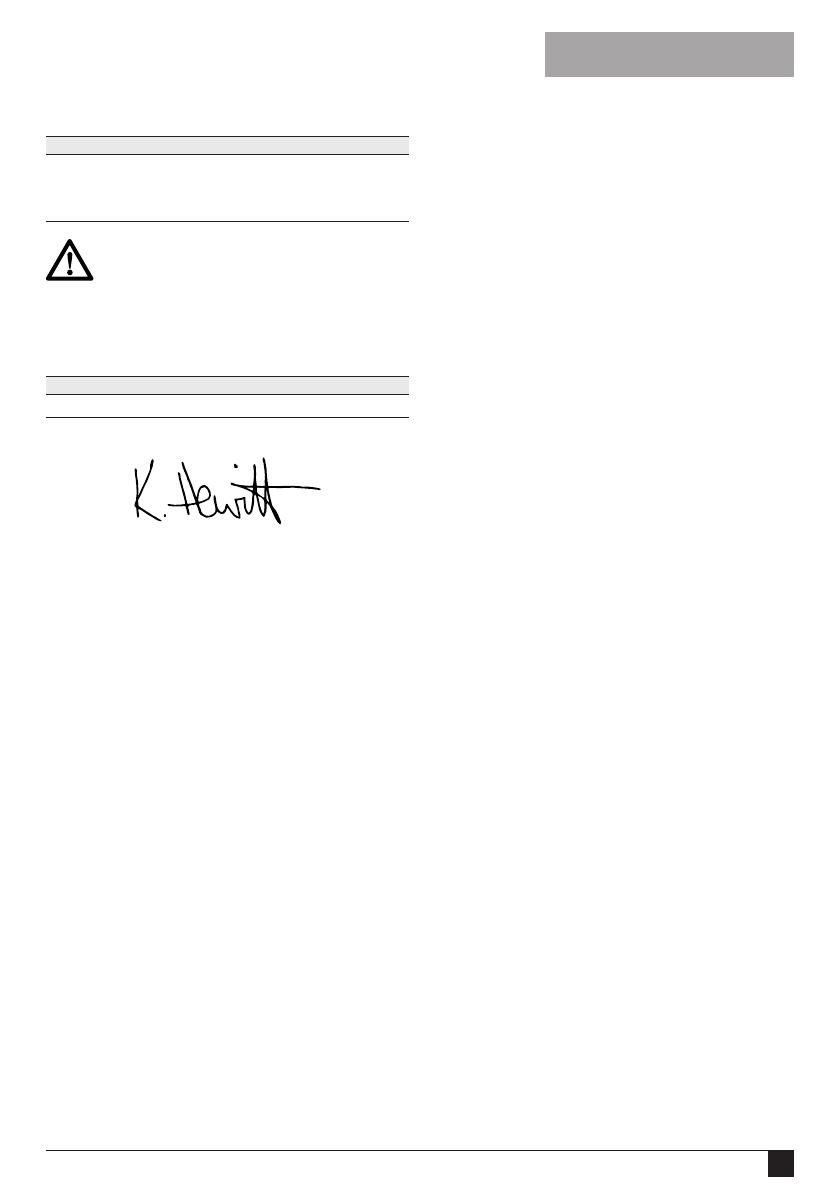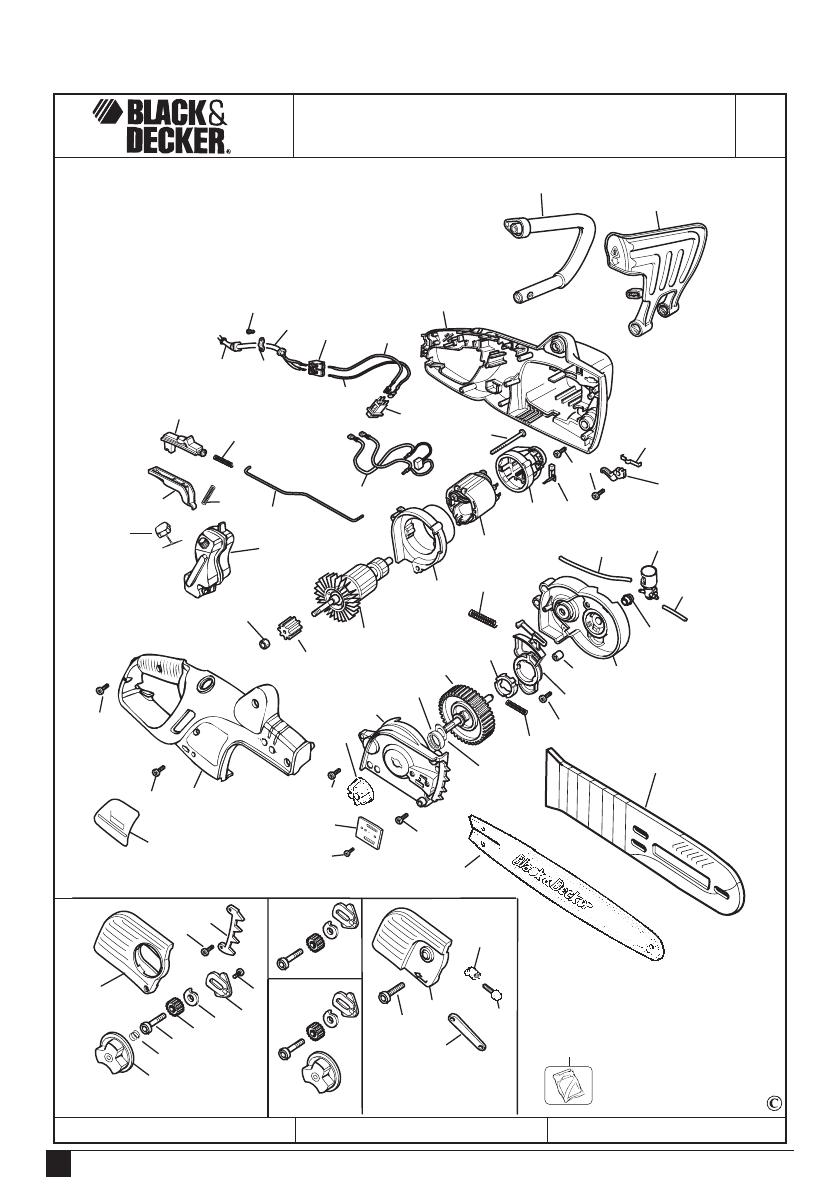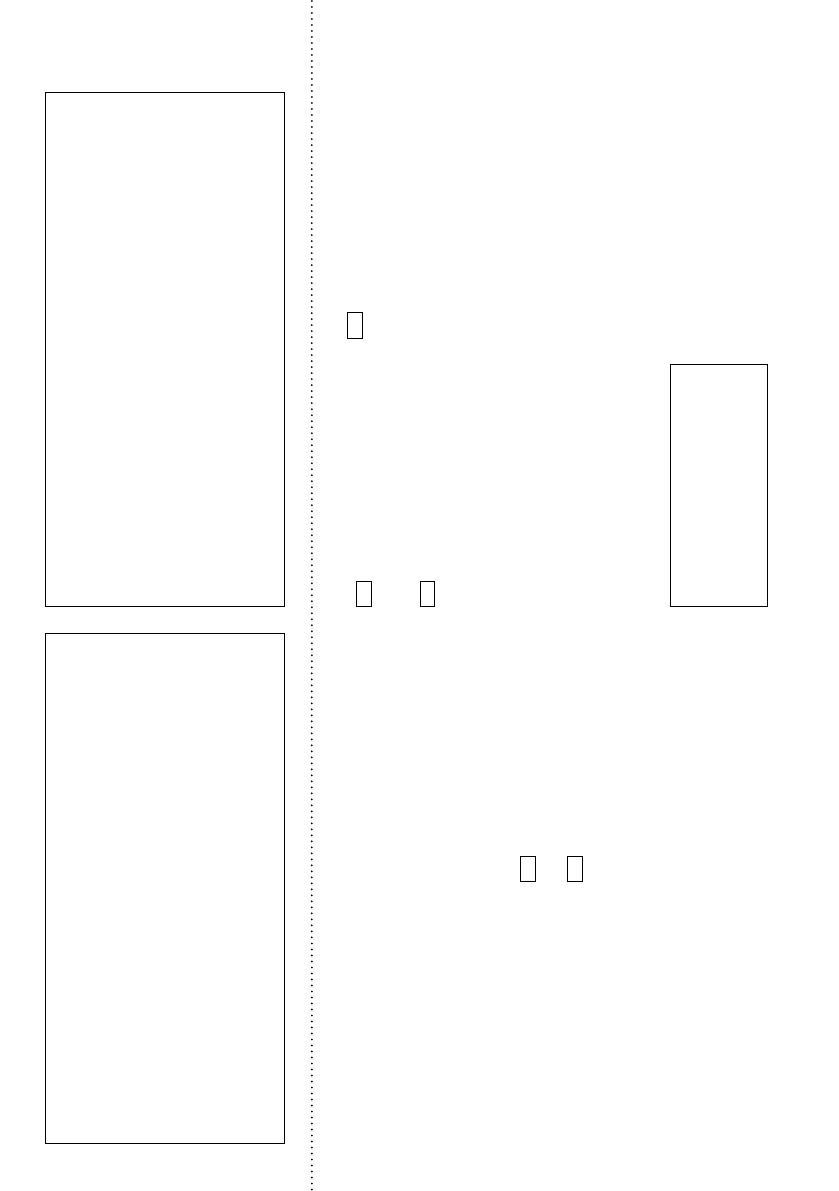
9
ENGLISH
A guard or other part that is damaged should be
properly repaired or replaced by an authorised
service agent. Do not use your chainsaw if the
switch does not turn it on and off.
◆ Repairs. This tool complies with relevant safety
requirements. Repairs should only be carried
out by qualified persons using original spare
parts; otherwise this may result in considerable
danger to the user.
Warning! The use of an accessory or
attachment other than those
recommended in this user manual may
present a risk of personal injury.
◆ For all types of cutting, always hold the saw
firmly with both hands, with thumbs and fingers
encircling the saw handles. Do not release your
grip until your chainsaw has stopped moving.
◆ Be sure of your footing and pre-plan a safe exit
from a falling tree or branches.
◆ Use wedges to help control felling and prevent
binding the guide bar and saw chain in the cut.
◆ Keep all parts of your body and clothing away
from the saw chain when running your chainsaw.
Before you switch on make sure your chainsaw
is not contacting anything. Do not touch or try
to stop a moving saw chain with your hand.
◆ Carry your chainsaw carefully with the mains
supply disconnected and with the guide bar
and saw chain to the rear and the blade sheath
fitted.
◆ Keep your chainsaw clean. Do not allow dirt,
oil or sawdust to build up on your chainsaw.
Pay particular attention to the air inlet and
outlet slots; these must not become clogged.
Clean your chainsaw with a dry cloth but do
not use any solvents or cleaning fluids.
◆ Saw chain care. Keep the saw chain sharp and
snug on the guide bar. Ensure the saw chain
and guide bar are clean and well oiled.
Beware of kickback. Kickback is upward/
backward motion of the guide bar that
may occur when the nose of the saw chain
unexpectedly comes in contact with an
object. Hold your chainsaw firmly with
both hands when the motor is running.
Use a firm grip with thumbs and fingers
encircling the handles and watch carefully
what you cut.
Kickback can be caused by:
◆ Striking branches or other objects accidentally
with a tip of the saw while the saw chain is
moving.
◆ Striking metal, cement or any other hard
material near the wood, or buried in the wood.
◆ A dull or loose chain.
◆ Cutting above shoulder height.
◆ Lack of attention when holding or guiding the
saw while cutting.
◆ Over-reaching. Keep proper footing and
balance at all times and do not overreach.
◆ Do not try to insert into a previous cut, as this
could cause kickback. Make a fresh cut every time.
◆ We strongly recommend you do not attempt
to operate your chainsaw while in a tree, on a
ladder or on any other unstable surface. If you
decide to do so, be advised that these
positions are extremely dangerous.
◆ When cutting a branch that is under tension,
be alert for spring back so that you will not be
struck when the tension is released.
◆ Avoid cutting:
◆ Prepared timber.
◆ Into the ground.
◆ Into wire fences, nails, etc.
◆ Into small sized brush and saplings because
slender material may catch the saw chain and
be whipped towards you, or pull you off
balance.
◆ Do not use your chainsaw above shoulder height.
◆ Ensure someone is nearby (but at a safe distance)
in case of an accident.
◆ If for any reason you have to touch the chain,
make sure your chainsaw is disconnected from
the mains.
◆ The noise from this product can exceed 85 dB(A).
We therefore recommend you take appropriate
measures for the protection of hearing.
Warning symbols on your chainsaw
Read all of this manual carefully.












